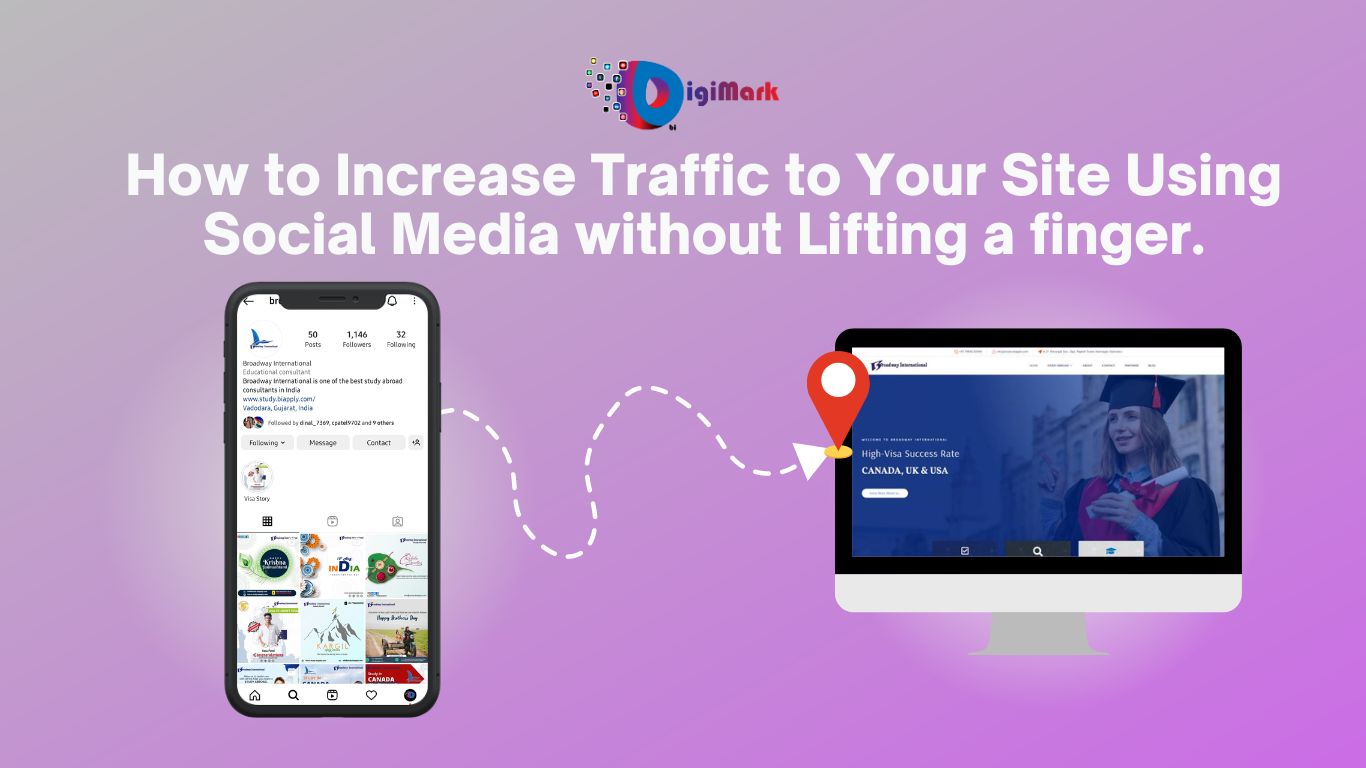Social Media Marketing
Are you struggling to drive traffic to your website? With the increasing competition online, it can be challenging to get noticed by your target audience.
However, one of the best ways to increase traffic to your site is by leveraging social media marketing. In this article, we will share some practical tips on how to use social media effectively to drive more traffic to your website.
Understanding Social Media Marketing
Before we dive into the tips, it is essential to understand what social media marketing is and why it is crucial for your business.
Social media marketing refers to the use of social media platforms like Facebook, Instagram, Twitter, LinkedIn, and others to promote your products, services, or brand.
Social media has become an integral part of our daily lives, and businesses can use it to connect with their target audience, increase brand awareness, and drive more traffic to their website. With over 3.6 billion social media users worldwide, it’s a channel that you can’t afford to ignore.
Setting Goals for Your Social Media Marketing Campaign
Before you start implementing social media marketing strategies, it’s important to define your goals. What do you want to achieve with your social media campaign?
Do you want to increase website traffic, generate leads, boost sales, or improve brand awareness?
Once you have defined your goals, you can create a social media marketing plan that aligns with your objectives.
Your plan should include the platforms you will use, the type of content you will create, your posting schedule, and how you will measure your results.
Choosing the Right Social Media Platforms
Not all social media platforms are the same, and you should choose the ones that are most relevant to your business and target audience.
For example,if you’re targeting B2B clients, LinkedIn may be a better platform than Instagram, which is more popular among B2C customers.
It’s important to research your target audience and understand their behavior on social media. This will help you determine which platforms to focus on and how to tailor your content to their preferences.
Creating Engaging Content
One of the most critical aspects of social media marketing is creating engaging content that resonates with your target audience. Your content should be informative, entertaining, and shareable.
Use images, videos, infographics, and other visual content to make your posts more attractive and engaging.
Also, make sure that your content is relevant to your audience’s interests and needs. You can use social media analytics tools to track the performance of your content and adjust your strategy accordingly.
Leveraging Hashtags
Hashtags are a powerful tool for reaching a wider audience on social media. They make your content discoverable by people who are searching for specific topics or keywords.
Use relevant hashtags in your posts to increase their visibility and reach.
However, don’t overdo it with hashtags as this can make your posts look spammy and reduce their engagement. Stick to a few relevant hashtags that are popular in your industry or niche.
Running Social Media Ads
Social media ads are an effective way to reach your target audience and drive traffic to your website. You can use various ad formats, such as sponsored posts, carousel ads, video ads, and more.
When creating your ads, make sure that they are visually appealing, have a clear call-to-action, and are relevant to your target audience.
Also, use targeting options like demographics, interests, and behavior to ensure that your ads reach the right people.
Engaging with Your Followers
Social media is a two-way communication channel, and it’s essential to engage with your followers regularly. Respond to comments, messages, and mentions promptly, and show appreciation for your followers’ support.
To ensure that your social media marketing campaign is successful, it’s important to measure your results regularly. You can use social media analytics tools like Google Analytics, Hootsuite, or Sprout Social to track your website traffic, engagement rates, and conversion rates.
By analyzing your results, you can identify what’s working and what’s not and adjust your strategy accordingly. For example, if you notice that your posts on LinkedIn are generating more website traffic than your posts on Facebook, you may want to focus more on LinkedIn in the future.
Conclusion
Social media marketing is an essential tool for driving more traffic to your website. By creating engaging content, leveraging hashtags, running social media ads, and engaging with your followers, you can increase your brand awareness and attract more visitors to your site. Remember to set clear goals, choose the right platforms, and measure your results to ensure that your social media marketing campaign is successful.

